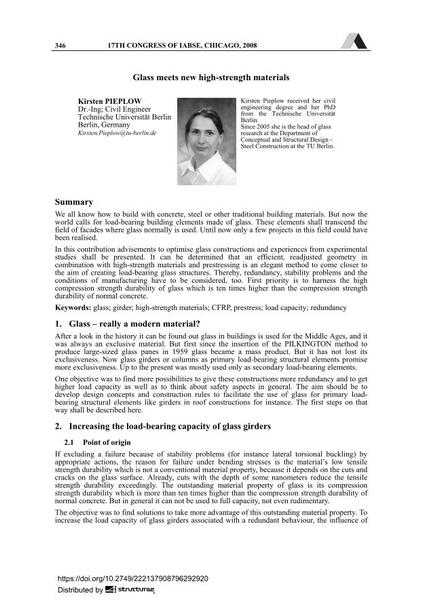Glass meets new high-strength materials

|
|
|||||||||||
Bibliografische Angaben
| Autor(en): |
Kirsten Pieplow
|
||||
|---|---|---|---|---|---|
| Medium: | Tagungsbeitrag | ||||
| Sprache(n): | Englisch | ||||
| Tagung: | 17th IABSE Congress: Creating and Renewing Urban Structures – Tall Buildings, Bridges and Infrastructure, Chicago, USA, 17-19 September 2008 | ||||
| Veröffentlicht in: | IABSE Congress Chicago 2008 | ||||
|
|||||
| Seite(n): | 346-347 | ||||
| Anzahl der Seiten (im PDF): | 8 | ||||
| Jahr: | 2008 | ||||
| DOI: | 10.2749/222137908796292920 | ||||
| Abstrakt: |
We know how to build with concrete, steel or other traditional building materials. But now the world calls for load-bearing building elements made of glass. These elements shall transcend the field of facades where glass normally is used. Until now only a few projects in this field could have been realised. In this contribution advisements to optimise glass constructions and experiences from experimental studies shall be presented. It can be determined that an efficient, readjusted geometry in combination with high-strength materials and prestressing is an elegant method to come closer to the aim of creating load-bearing glass structures. Thereby, redundancy, stability problems and the conditions of manufacturing have to be considered, too. First priority is to harness the high compression strength durability of glass which is ten times higher than the compression strength durability of normal concrete. |
||||
| Stichwörter: |
Redundanz Balken Glas CFRP
|
||||
